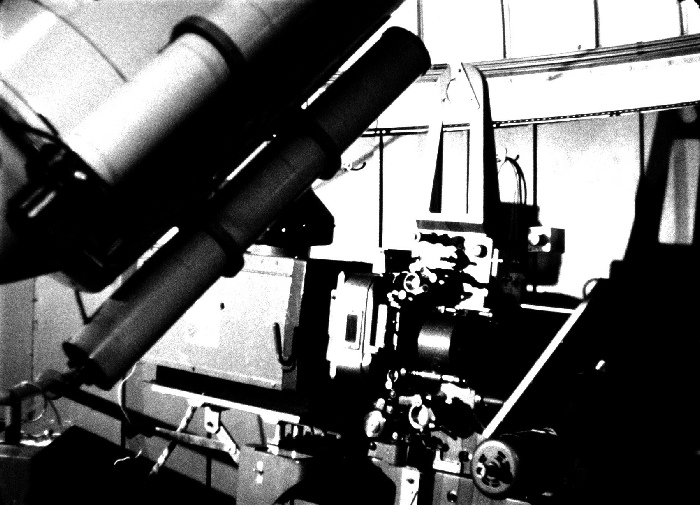Press Release
From her earliest proposals during the late 1990s until her most recent work, Rosa Barba (Italian, resides in Germany) has woven a web of sculptures, installations, films and artist’s books. With an unusual treatment of the cinematic language and its components, the artist questions our present reality and our way of occupying the space that surrounds us—mentally and physically. She also proposes open debates regarding what is still to come. The artist creates new narratives and spatial pieces in which time itself is understood as a kind of accumulation, rather than a linear progression. On occasion, language eludes its semiotic function and moves towards abstraction, thus complicating how the work is read and heard.

Rosa Barba, Drawn by the Pulse
Tabakalera, ICCC, San Sebastian (Spain)
22.06 - 14.10.2018


© ArtCatalyse International / Marika Prévosto 2018. All Rights Reserved
Exhibition June 22 -
Arid, extending landscapes—mainly deserts—and the relationship between film and astronomy act as the starting points to many of Barba’s most outstanding pieces. Both spaces, the desert and the cosmos, are capable of preserving documents regarding the relationship between human beings and nature and the influence that they have exerted on it. Deserts and astronomy also share something else: the encounter between old and new technologies, a coming together provoked by how they are used, as happens with deserts, or by the need to see what is not within sight, as is the case with astronomy. This relationship between the environment-
Her works carried out in astronomical observatories employ terrestrial shots that reproduce an ancestral mode of seeing, anchored to the earth and inherently linked to a need for knowledge. It is a gaze heavy with questions. This way of looking through and from two, such different and yet so closely linked, machines of vision – the telescope and the cinematic camera, favors speculation over that which is outside the reach of the human eye. In the case of the telescope, these distant things may be forms of nature like the planets or the stars. In the case of the camera, they may be experiences related to time and to the relationships between the “I” and the world. The act of seeing in these works also maintains a relationship with history, with that which has happened. This history is not the vestiges that can be traced through landscape, but rather the knowledge and fascination that the cosmos has aroused in scientists, philosophers, writers and artists.
In this context, the central axis of the show is the piece Drawn by the Pulse (2018), produced for this occasion and from which it takes its title. Filmed at the Harvard Astronomical Observatory, the work takes as its starting point Henrietta S. Leavitt´s (USA, 1868–1921) research on the properties of stars.
Rosa Barba, Above the Plate and Receiver (still), 2016. 16mm film, optical sound; 5 min. © Rosa Barba.
